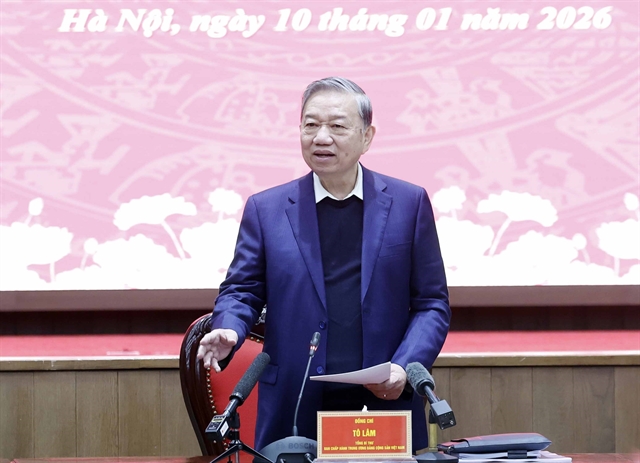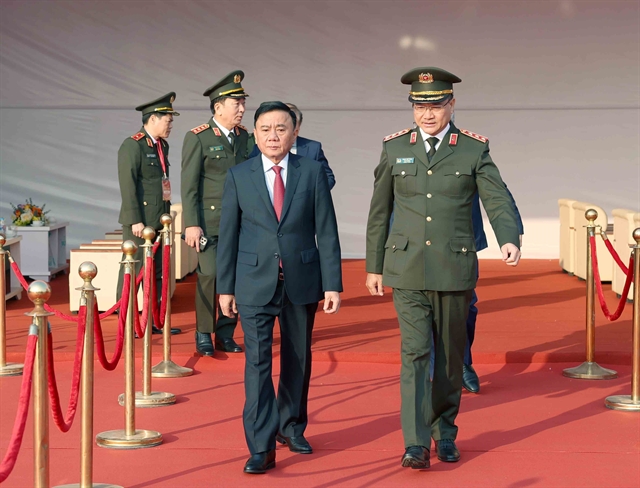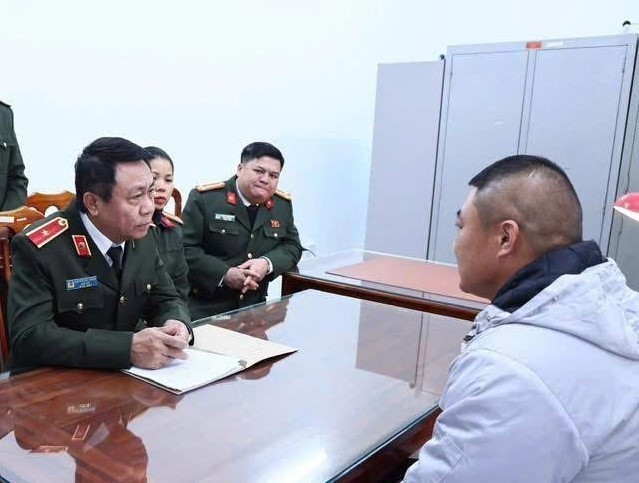 Society
Society

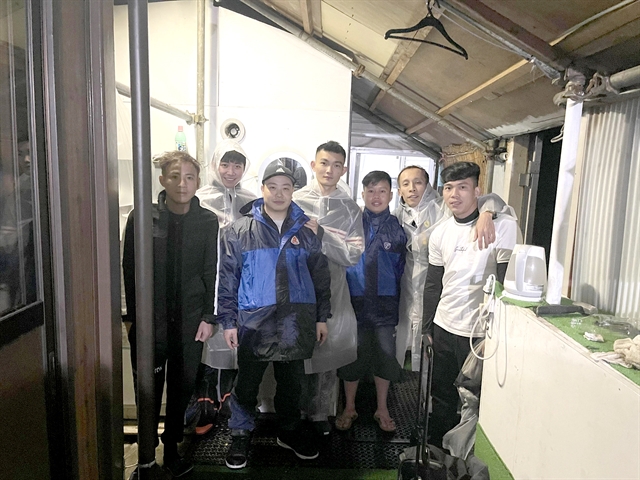 |
| Được's rescue team during a relief trip at Wakaru Onsen on January 3. Photo nhandan.vn |
HÀ NỘI - Nguyễn Chí Thành Được, a food store owner in Fukui, Japan, has led a Vietnamese team to search for and rescue Vietnamese people missing and affected by the magnitude 7.6 quake on January 1.
Having lived in central Japan for 15 years, Được is no stranger to earthquakes on the Pacific Ring of Fire. But never before did he feel the disaster so close.
On the first day of 2024, his family planned to go on vacation in Nanao City, which was the epicentre of the 7.6 magnitude earthquake that devastated the western province of Japan.
"Fortunately, on that day, my family opened a restaurant in a neighbouring province so the trip was delayed. Otherwise, my family might have been stuck in Nanao," he told Nhân Dân (People) newspaper over the phone.
He then travelled to Ishikawa after the quake to inspect three of his business facilities there.
“The news made me more impatient. The high-speed train was suspended then. Hundreds of houses collapsed and were burned,” he said.
"At this time, there were many Vietnamese trainees from dangerous areas calling for help. Many workers even lost contact with their relatives. As a trainee manager, I decided to seek ways to support them,” he said.
Two days after the disaster, Được and his friends spent more than VNĐ100 million to buy essential items.
Each of them bought three 20-litre buckets of water, collected ramen and udon noodles, lunch boxes, disposable chopsticks and anything they could, loaded the items into three cars and headed towards Wakura Onsen area, where 10 female Vietnamese trainees were staying, to begin their first relief trip.
As of January 3, almost no Vietnamese had been able to access the epicentre.
"It's very difficult to travel. The earthquake caused many highways to crack. On bumpy roads, we had to slow down to less than 20km per hour. Our cars fell into potholes and got stuck many times.”
Nearly 7:00pm (local time) on January 3, the team could finally reach the epicentre. On both sides, houses had collapsed and tilted. Leaving the car behind, the Vietnamese team walked deeper inside, met the first group of Vietnamese people and gave them the relief package.
"That day, six hours after completing the first relief trip was I able to return to my business facility to rest. We felt aftershocks continuously throughout the journey combined with the sound of ambulances blaring,” he said.
In the following days, Được’s team continued to drive hundreds of kilometres to bring necessities to Vietnamese people evacuated from the quake in different areas of Nanao.
He also called for the community to donate items on his personal Facebook page.
Through this channel, many tonnes of goods have been granted to Vietnamese living in Japan.
Searching for seven missing trainees
"Looking for my sister N.T.L, born in 1981, who lost contact. Can anyone who is in a shelter or has seen her help me? My family is worried right now. I just know that she is working in Ishikawa province and I hope everyone can help me."
That is one of the messages asking for help on online platforms of Vietnamese associations and groups in Japan looking for seven missing victims who are Vietnamese trainees.
At that time, the relatives of the seven women were unable to contact them and could not know what happened to them.
They are all garment industry interns who have just arrived in Japan and have not yet registered their phone SIM cards.
Early in the afternoon of January 5, Được heard about the above story and started his relief journey.
Guessing that the girls might still be stuck in town, at 4am the following day, Được’s rescue team started getting on a bus from Komatsu to Wajima, which was then still a dangerous area and difficult to access as a series of tremors were reported.
Compared to previous trips, the path to Wajima was even tougher with more cracks and broken-down cars left lying along the roads.
Sometimes the team lost their way or had to stop following the instructions of Japanese authorities. The phones continuously lost signal and brought rescue efforts to a standstill.
"Every time there was a signal, we called each and every refugee centre in Wajima to ask for information. Luckily, in the afternoon of the same day, a local community house manager confirmed that a group of seven Vietnamese people were staying at his place,” Được said.
At about 6pm the same day, after a 12-hour journey, his team could finally reach the destination.
In front of them was a three-story building that was quite old but still in good condition. The electrical system was cut off, leaving only the hum of generators around.
“Stepping up to the second floor, pushing the door I saw a few people and asked ‘Are there any Vietnamese here?’ Immediately, three girls sitting huddled together by the small fireplace stood up and burst into tears. They ran towards us and hugged their compatriots. I burst into tears at this moment. It’s been a long time I have not been crying like that,” Được said. "It seemed that, for a moment, both we and the interns felt hope.
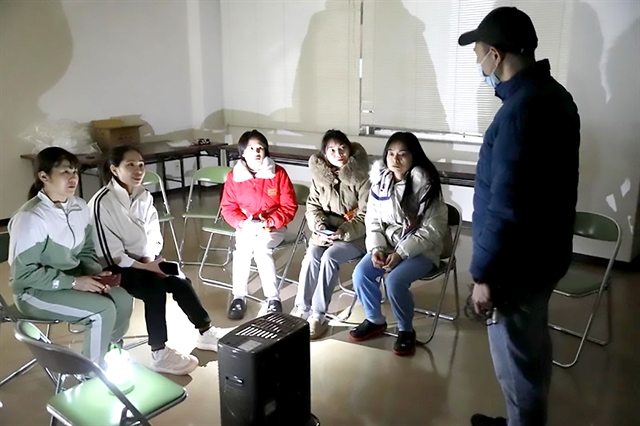 |
| Female Vietnamese trainees sit around a light at a community house after the quake. VNA/VNS Photo |
He was the first Vietnamese to find the seven missing workers at Wajima six days after the disaster. They immediately distributed gifts and found an internet connection so the girls could report their safety to their families after nearly a week of no connection.
Phương Hiền, one of the seven trainees, said they were panicked when the disaster occurred. After running to the town's community house for refuge, the girls had to share the food they brought from Việt Nam on the first days.
Without bowls or chopsticks, the seven people cooked instant noodles in one pot and then used hands to eat. The group also had to return to their collapsed house to get blankets, pillows, and other necessary items to fight the winter cold.
By noon on January 7, the seven girls trapped at the epicentre of Wajima were brought back to a safe place by the Vietnamese relief team.
Được, who was featured by NHK for his team’s 10-day rescue efforts, said: “I just want to lend a hand to people in difficulty. 'Healthy leaves envelop torn leaves'. I hope that the victims will soon stabilise their mental state to return to normal life.”
Được’s team is just one of the pioneering groups heading to the quake epicentre to rescue victims.
After the earthquake on January 1, the Vietnamese community all over Japan launched a donation campaign to help the quake-hit victims.
Nguyễn Hồng Sơn, chairman of the Union of Vietnamese Associations in Japan, said Ishikawa province has more than 5,000 Vietnamese people, of which about 600, mostly interns, are working in Japanese companies or factories on the Noto peninsula.
A report from the Ishikawa provincial government said that there has been no loss of life in the Vietnamese community here, he said. VNS

